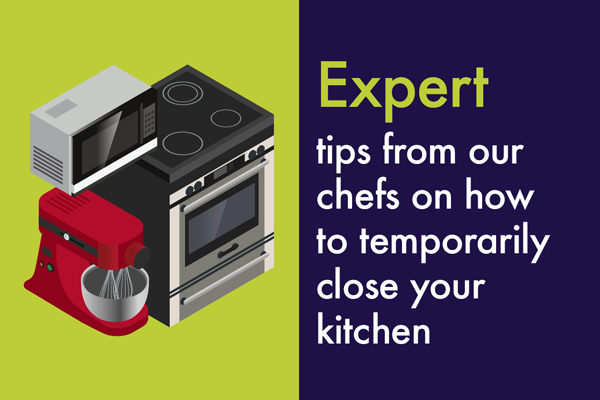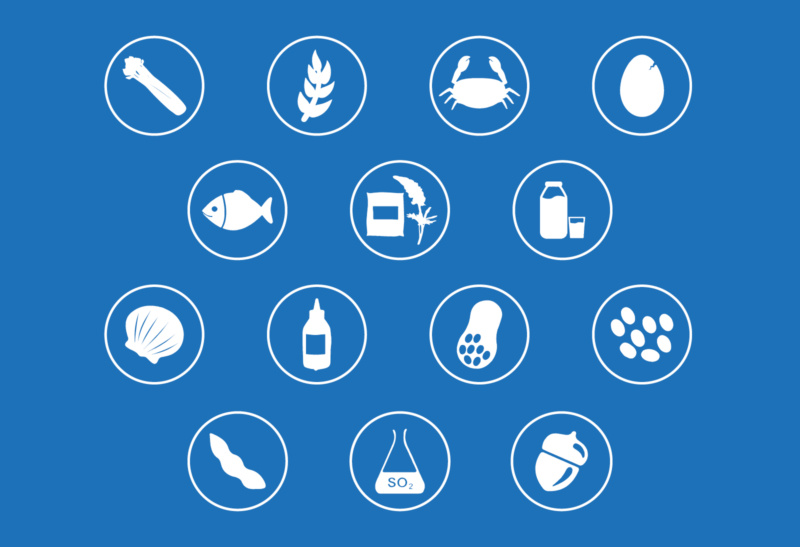With many kitchens temporarily closed for the foreseeable future, this moment of pause provides the perfect time for a kitchen deep clean.
I’ve been chatting to Pam Maclean, Food Development Manager at Bidfood, to hear how to make the most of this time and help your teams close down and clear your kitchen safely and hygienically with an easy to follow check list.
1) Review your current stock holding
- If you’ve not already done so, can you use or distribute your remaining stock to food banks to clear fridges/freezers and store rooms?
- Check stock rooms for short life stock and for any opened packages, these should be redistributed or disposed of. Any long life stock to be kept should be checked to ensure it is not damaged and placed in date order on the shelves to ensure the earliest date is easily visible. The front item should be clearly labelled with the Use by date so it is easily highlighted on return. Store rooms should be swept and cleaned including shelving. The room should have a form of ventilation to allow the door to be closed.
- Ensure pest traps are available and clean, check they are maintained and/or switched on. Clean the outsides of all flour bins and other bulk bins – if these cannot be emptied and the product is visibly dated seal the lids on
- Completely empty walk in fridges, and clean and dry racking before placing it back in the fridge. Condensing units should be cleaned (you may require specialist cleaners to do this). If the fridge is to be switched off it should be cleaned after the switch off and the door left slightly ajar if possible (if no threat from insects/dust). Clean and dry all fridge seals and handles. We recommend our Essentials Supplies Sanitiser to do the job. Keep walk in freezers on if stock is to be kept. Ensure the condenser is clear of ice and there is plenty of space around it so the airflow can be maintained. All stock should be tidied and put in date order, any opened packages should be redistributed or disposed of. Small freezers and chest freezers should be emptied, cleaned and restocked in date order if to be kept on, however the preference for these should be to empty and clean, turn off and leave the door slightly ajar (if no threat from insects/dust). Clean and dry fridge seals and handles.
2) Preserve iron cooking tops
- Thoroughly clean and dry solid cooking tops, chargrills, griddles and other non-stainless cooking tops. A layer of oil should be rubbed into the surfaces to prevent them rusting whilst not in use
- Burners should be cleaned and dried well, any draining pans should be emptied, cleaned and dried
- Where possible allow equipment to be air dried before putting back together to ensure no moisture is retained
3) Deep clean ovens
- Strip and clean ovens including burners where accessible, allowing doors to remain open slightly (if no threat from insects/dust)
- If an oven has a spray hose function, the hose should be emptied after the water has been switched off to remove any water held in it
4) Tidy away small equipment
- Clean and thoroughly dry all small equipment and allow to air dry if possible before restacking to ensure no moisture is left on pans and utensils
- Empty, thoroughly clean and dry racking. Move shelving and clean walls and floor behind and beneath the shelving
- If possible, wrap cleaned and dried equipment in cling film to keep clean. Our Essentials Supplies cling film is a brilliant kitchen staple.
5) General check list
- Check pest traps are in place, are maintained and/or switched on in all areas including store rooms
- Tidy drawers and clean, removing unnecessary items, clear information which will be irrelevant on return such as winter menu specs
- Clean hot lamps above servery to remove grease so dust does not trap on them
- Flush any lines which usually have chemicals through them to manufacturers standards
- Empty all bins, clean and air dry, allow them to stay ajar
- Clean and dry or replace canopy filters (you may need specialist cleaners to do this)
- Clean all storage boxes and items in them, ensure all dry when replacing, then cling film them to keep clean
- Steam clean microwaves and check the roof, door and seals are clean
- Remove any dirty cloths including tea towels, oven cloths, dishcloths, sponges, wire scrubbers
- Empty, switch off and clean ice machines, coffee machines, boilers, hot cupboards, hot trolleys
- Sweep floors and thoroughly wet mop then dry mop afterwards
- Ensure emergency gas switches are on and extractors are off
That’s it. Whilst this may seem like a long to do list , the rewards will come further down the line when you are able to quickly open your kitchen again and your customers can be assured your outlet upholds the strictest hygiene standards.
Take a look at our Catering Supplies range for kitchen cleaning, housekeeping and hygiene essentials.



